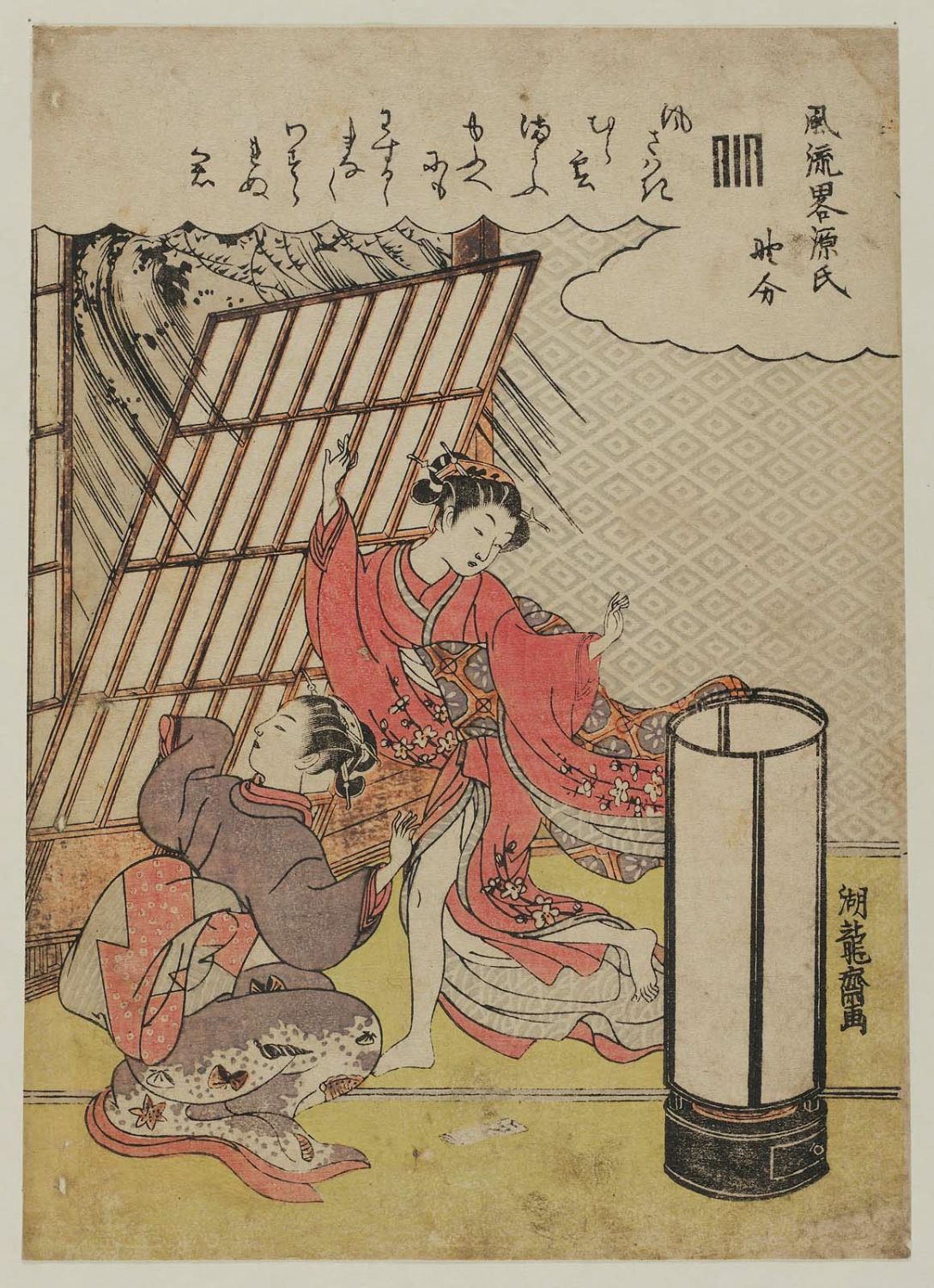Autumn is the time for typhoon in Japan…
妻も子も寺で物くふ野分かな
tsuma mo ko mo tera de mono kū nowaki kana[1]
wives and children
eating at the temple…
autumn typhoon
—Buson[2]

Even today some temples still function as evacuation buildings. You can imagine how this might have been even more so back in the day, as they were fairly important buildings, well built, and everyone knew them, making them ideal locations for emergencies.
The word used here, nowaki, is emphasizing the typhoon wind and not the rain. “Field-dividing wind” may be a better translation, as the word gives an image of rice fields damaged by the strong wind. This is unfortunately not an uncommon occurrence.[3] Often after a typhoon passes I can walk to the rice fields and see portions of the rice paddies damaged or even completely destroyed.
I added “autumn” before typhoon in my translation just to put this in the proper season for any unfamiliar with these storms. Autumn is typhoon season in Japan, with always at least a few hitting, often at least one of which will be fairly big and might cause some damage somewhere on the main island (Honshū).
As always with his haiku, Buson is painting us a picture with his words. More than any other classic haiku poet, Buson was very visual in his words. His main job was as an artist, which may be why he leaned towards this style of haiku.
-
The title of the woodblock print is actually Nowaki as well. “Typhoon” is a simple translation so no explanation is needed, but now you know what nowaki is so it’s all good. ↩